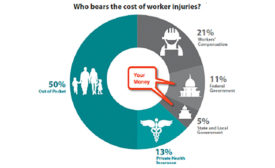Home » Keywords: » injury
Items Tagged with 'injury'
ARTICLES
From NIOSH's Research Rounds bulletin
Occupational injury: Do family members pay a price?
November 25, 2015
Better ways to spend our tax dollars
Why should your money cover the cost of injuries?
September 1, 2015
Become a Leader in Safety Culture
Build your knowledge with ISHN, covering key safety, health and industrial hygiene news, products, and trends.
JOIN TODAYCopyright ©2025. All Rights Reserved BNP Media.
Design, CMS, Hosting & Web Development :: ePublishing












